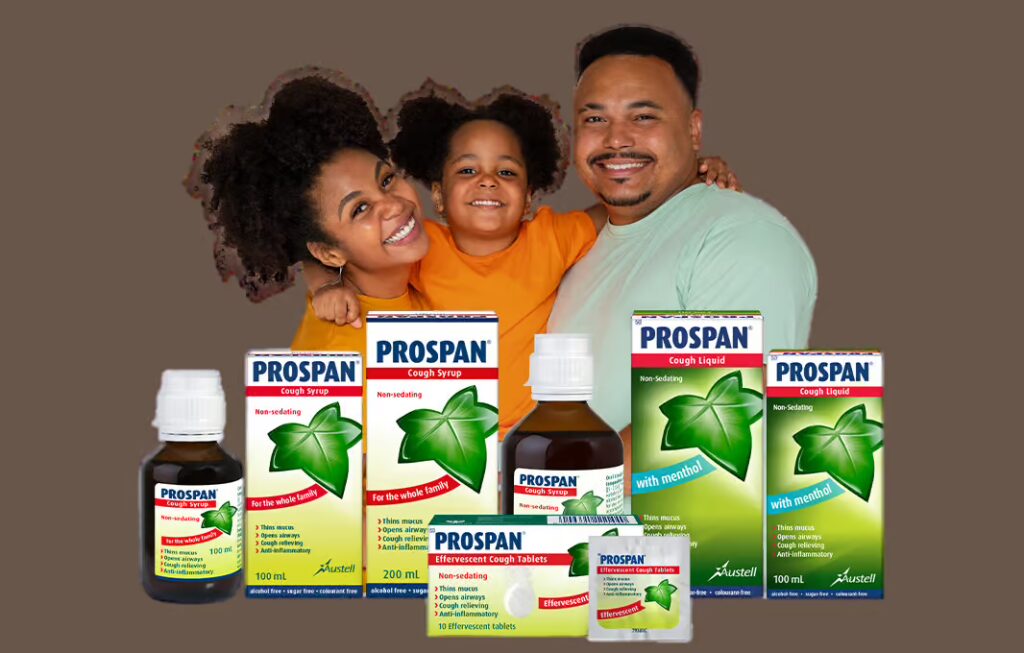Most parents are familiar with the unsettling sound of a child’s cough, especially during winter. While it might seem like a minor symptom, it can be distressing for both children and parents. Understanding what is causing the cough and how to treat it can help parents feel prepared. Key to this is understanding the hidden role of inflammation.
Below we unpack why children cough and common cough types, their causes and how to treat them.
Why do children cough?
Like adults, children cough for many reasons. It might be due to a viral infection, allergies, reflux, or even irritants in the air. While most coughs are not dangerous, certain types may require closer attention.
Another often-overlooked cause for a cough is inflammation in your child’s airways. This hidden culprit can be a secondary reaction to some form of irritation, such as excess mucus or a virus. However, it can also stick around after other symptoms have cleared.
Wheezy coughs: more than just a cold
Wheezing, often described as a high-pitched or whistling sound when exhaling, typically happens when the airways are narrowed due to swelling in the lower respiratory system. This can occur during chest infections or colds and may be accompanied by persistent coughing.
In some cases, wheezing can be linked to asthma, but diagnosing this in babies and toddlers is tricky. Regardless of the cause, inflammation in the lower airways tends to be the main issue is a wheezing cough.
Croup and a barky cough
If your child has a cough that sounds something like a barking seal, it could be croup. This condition usually affects kids under five and is brought on by a viral infection that inflames the upper airway, particularly around the voice box and windpipe.
The hallmark of croup is that barking cough, often accompanied by a hoarse voice and a harsh breathing sound known as stridor. While the viruses behind croup, like RSV or influenza, are highly contagious, not all kids exposed to them will develop the condition.
The “whoop” behind whooping cough

Whooping cough, or pertussis, is a serious bacterial infection that causes intense, uncontrollable coughing fits. After each fit, a child may take in a deep gasp of air, producing the signature “whoop” sound.
This illness often begins with cold-like symptoms before escalating to more severe respiratory distress. Because it spreads easily through coughing, unvaccinated babies are particularly vulnerable.
Managing your little one’s cough
The best way to treat a cough depends on the underlying cause. Antibiotics, for instance, are effective against bacterial infections like whooping cough but won’t help with viral illnesses like croup. There are some general steps you can take, like ensuring your child drinks plenty of waterand avoiding fizzy drinks that can make a sore throat feel worse.

Over-the-counter (OTC) cough medications like Prospan Syrup can also help your little one feel better faster. When choosing a medication for your child, there are a few things to look out for. Most importantly, make sure the medication is suitable for young children. Prospan for example is indicated for use for children from 0 years and does not contain any alcohol. Another helpful action to look out for when choosing a cough medication is one that has anti-inflammatory properties.
Since inflammation is linked to coughing, having a medication that addresses this underlying problem, like Prospan Syrup can help your little one get better faster and even delay the need for more aggressive anti-inflammatory treatments.
When dealing with any illness in your little ones, it is always important to consult your healthcare provider. Having a sick child is distressing for any parent. Understanding the mechanics of different coughs and keeping a suitable treatment like Prospan Syrup on hand, you can intervene quickly and help your little one get back to feeling their usual self.
Because when it comes to coughs in children, it’s not just about quieting the noise—it’s about soothing the inflammation behind it. Find Prospan Syrup at any Clicks, Dischem, or independent Pharmacy.
We understand that there are many aspects that encompass a Mother, Father or Child and strive toward providing resources and services that accommodates this.
Our content is aimed to inform and educate families on issues starting from pregnancy through to the challenges of the teen-age years.
- Say Hello to the Ultimate Holiday Brunch Bite - December 17, 2025
- Tiny Toons Looniversity Returns: Meet the Voice Behind Plucky and Hamton! - December 12, 2025
- From Pain to Possibility: Panado®’s New Marketing Campaign, Highlights The Joy Of Pain Relief - December 10, 2025





